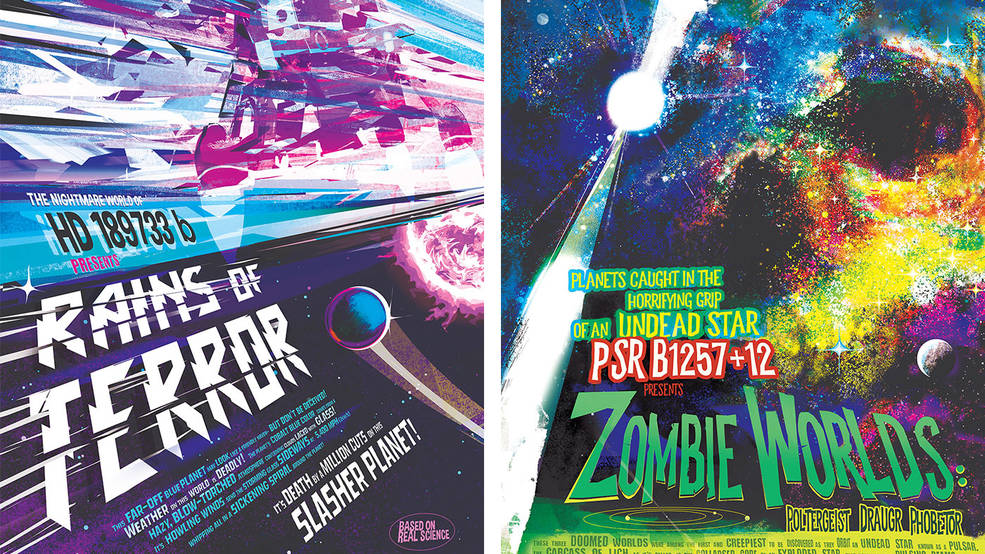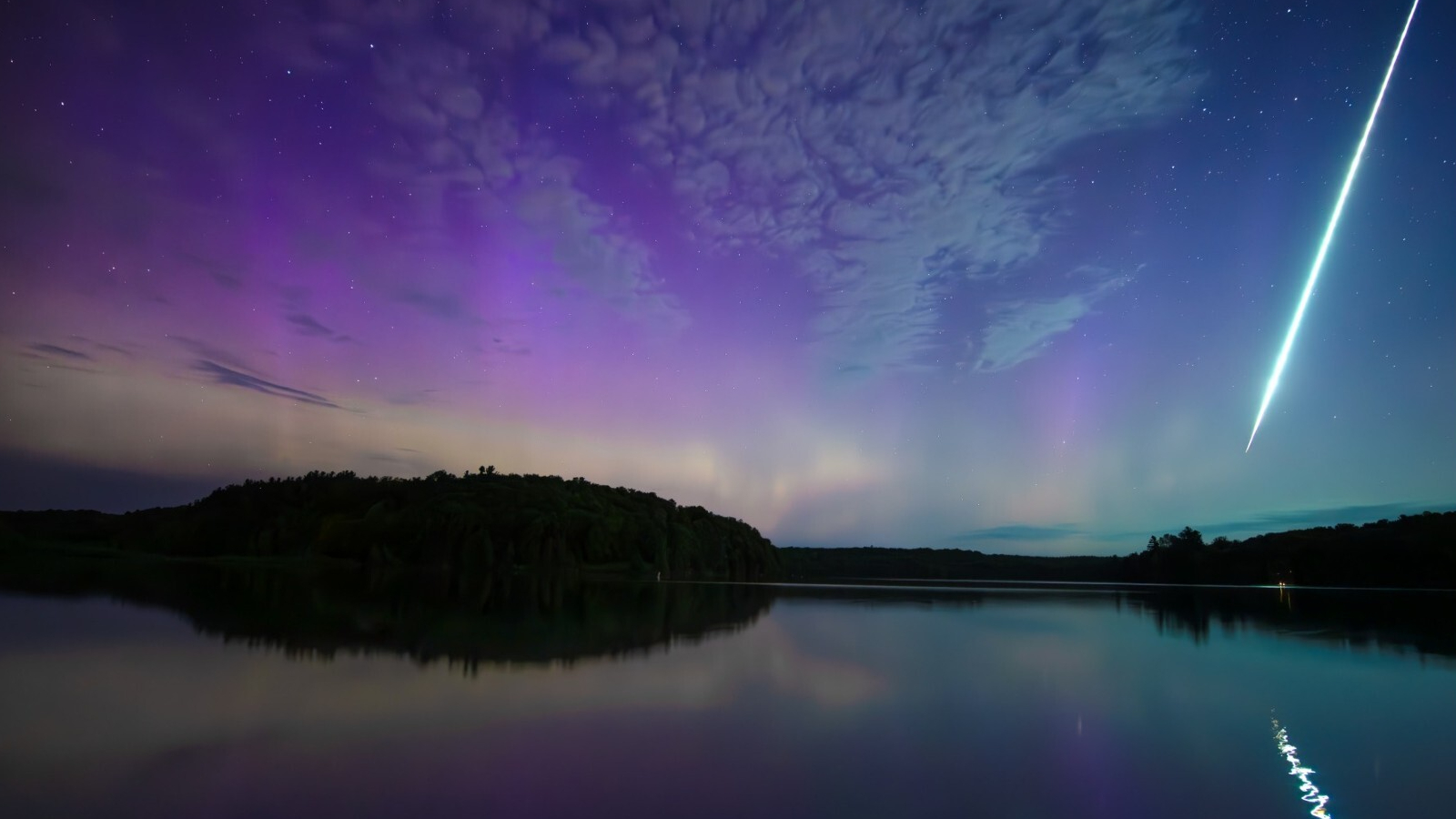
This Halloween season, NASA wants to open your eyes to the glorious spookiness all around us in the Milky Way galaxy.
The space agency has just released two new "Galaxy of Horrors" posters, which highlight a few of the most bizarre and inhospitable alien planets that scientists have discovered. And NASA created a fun 2-minute video, styled like a trailer for a 1950s horror movie, to promote the posters.
You can download the posters for free here.
Related: These Scary Things in Space Will Haunt Your Dreams
One of the featured worlds is HD 189733 b, a blue planet where winds whip sharp silicate-shard rain through the air at up to 5,400 mph (6,700 km/h).
"If human or robotic explorers could travel 63 light-years from Earth to get there, they would never survive this planetary hellscape," NASA officials wrote in a statement about the exotic exoplanet.
The other poster focuses on Poltergeist, Draugr and Phobetor, three planets that orbit the pulsar PSR B1257+12, which lies about 2,000 light-years from Earth. Pulsars are fast-spinning stellar corpses that emit beams of radiation from their poles; these beams appear to pulse because of the rotation, which gives pulsars their name.
Get the Space.com Newsletter
Breaking space news, the latest updates on rocket launches, skywatching events and more!
This powerful radiation bathes Poltergeist, Draugr and Phobetor, making life as we know it impossible on the worlds, NASA officials said.
The new posters were created by NASA's Exoplanet Exploration Program Office, which is based at the Jet Propulsion Laboratory (JPL) in Pasadena, California. This same organization also produced the Exoplanet Travel Bureau poster series, which depicts humans visiting exotic alien locales.
"People are often most interested in finding exoplanets that could resemble Earth or potentially support life as we know it," Thalia Rivera, an outreach specialist at JPL who led the development of the Galaxy of Horrors posters, said in the same statement.
"But there are so many other amazing, mystifying planets out there that are completely unlike Earth and that show us the huge variety of ways planets can form and evolve," Rivera added. "My favorite thing about exoplanets is how extreme they can get!"
"In practical terms, I think for many people the posters are an entryway," added Exoplanet Exploration Program manager Gary Blackwood. "They make exoplanet science cool, and that opens a door for many members of the public — especially students — to learn more about the science behind the posters."
Astronomers have discovered about 4,000 alien planets to date. Most of these finds have come courtesy of NASA's recently deceased Kepler space telescope, whose observations suggest that 20% to 25% of all Milky Way stars host a rocky planet in the "habitable zone," the just-right range of distances where liquid water could exist on a world's surface.
Kepler also showed how diverse and bizarre the exoplanet population is. There are "hot Jupiters," "mini-Neptunes" and many other types of worlds not represented in our own solar system — including planets where razor-sharp rain flies sideways through the air at nearly eight times the speed of sound.
- Gallery: The Strangest Alien Planets
- The Most Fascinating Exoplanets of 2018
- 7 Ways to Discover Alien Planets
Mike Wall's book about the search for alien life, "Out There" (Grand Central Publishing, 2018; illustrated by Karl Tate), is out now. Follow him on Twitter @michaeldwall. Follow us on Twitter @Spacedotcom or Facebook.
Join our Space Forums to keep talking space on the latest missions, night sky and more! And if you have a news tip, correction or comment, let us know at: community@space.com.

Michael Wall is a Senior Space Writer with Space.com and joined the team in 2010. He primarily covers exoplanets, spaceflight and military space, but has been known to dabble in the space art beat. His book about the search for alien life, "Out There," was published on Nov. 13, 2018. Before becoming a science writer, Michael worked as a herpetologist and wildlife biologist. He has a Ph.D. in evolutionary biology from the University of Sydney, Australia, a bachelor's degree from the University of Arizona, and a graduate certificate in science writing from the University of California, Santa Cruz. To find out what his latest project is, you can follow Michael on Twitter.
